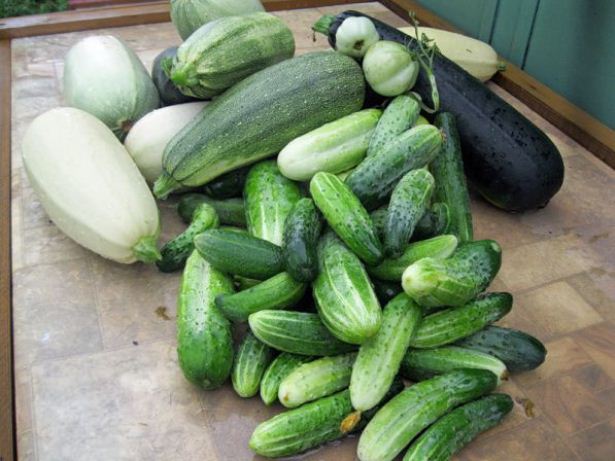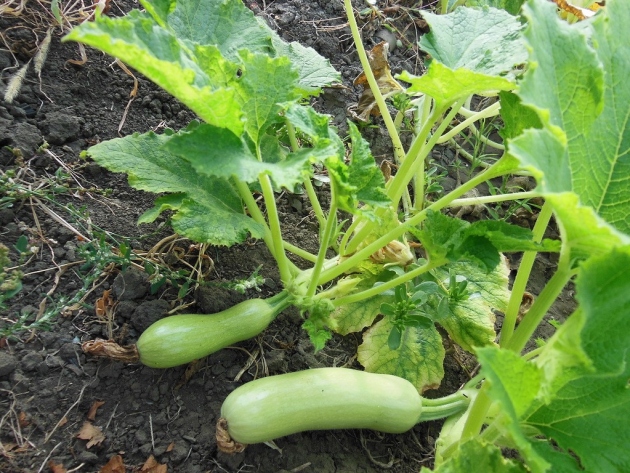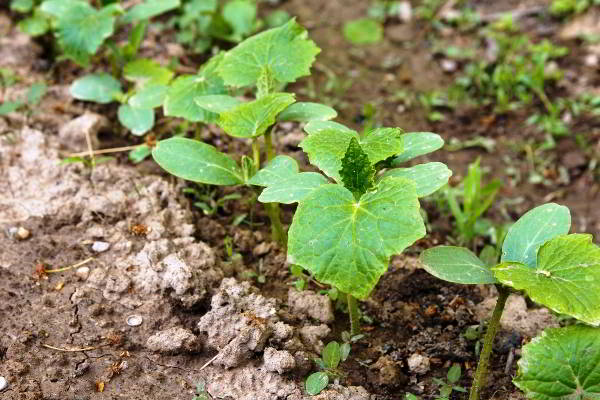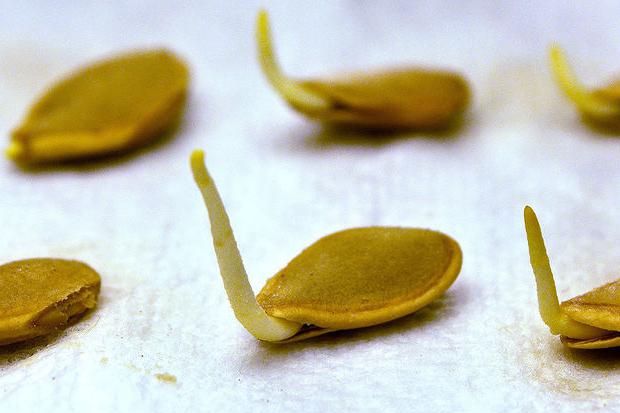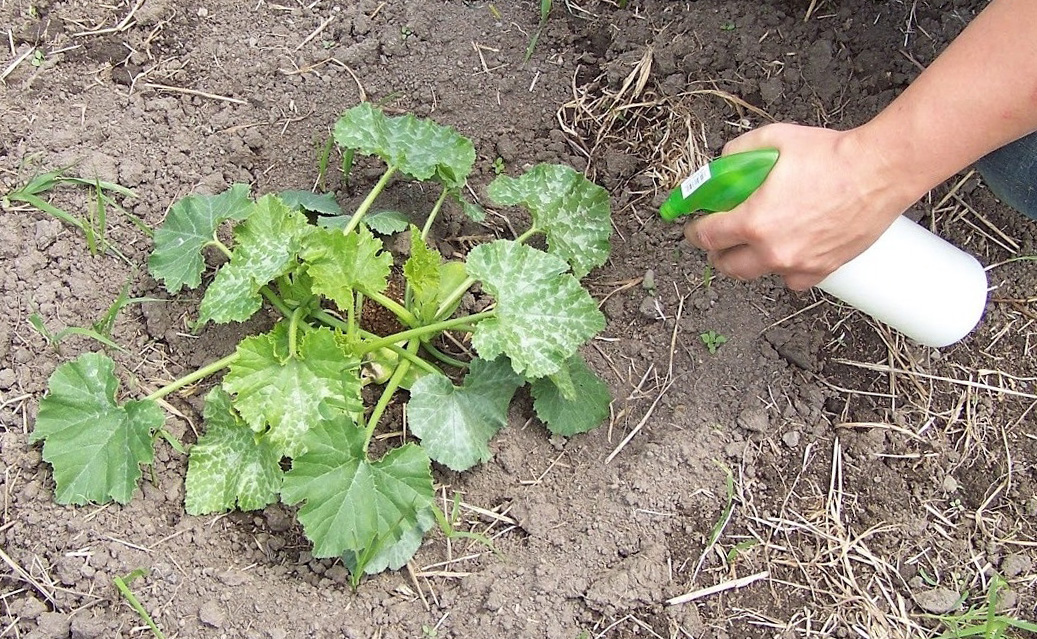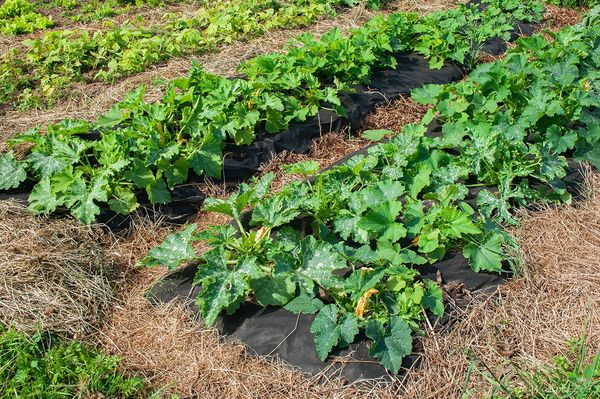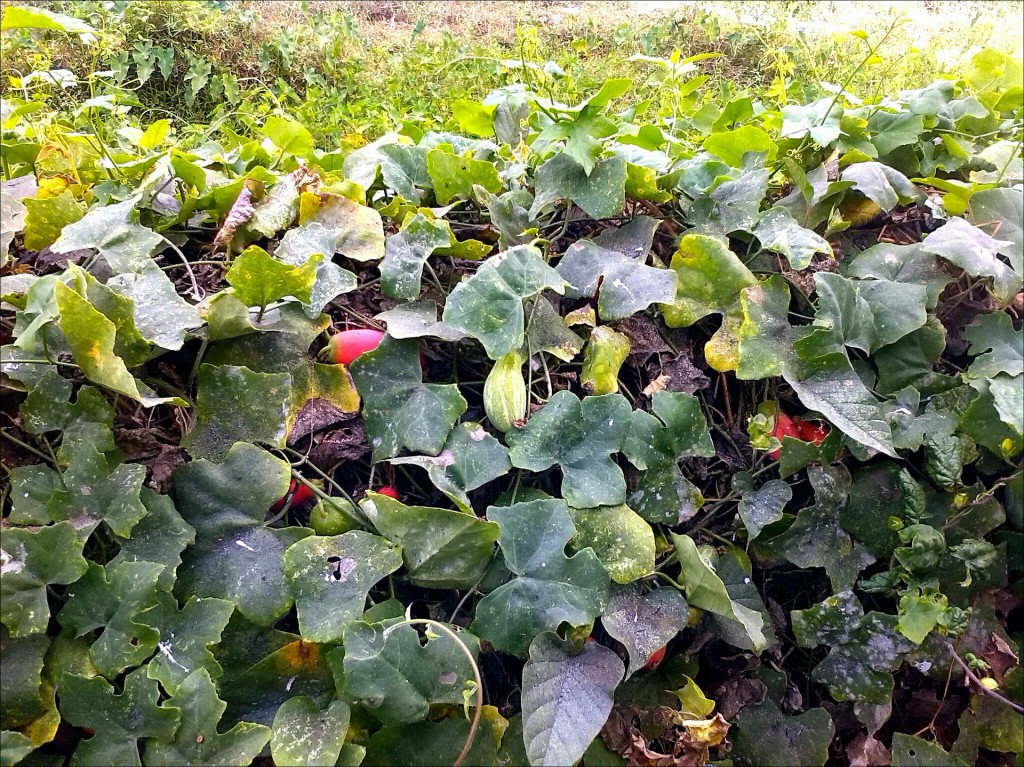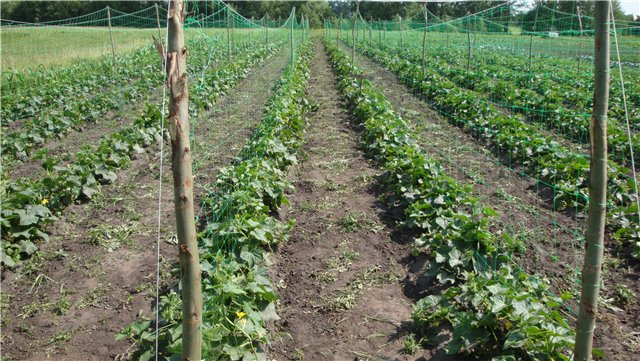Content:
When planning plantings on the site, special attention should be paid to growing certain plants next to each other. Having figured out whether it is possible to plant zucchini and cucumbers together, you will be able to get a good harvest of both crops.
Conditions for growing cucumbers
In our country and around the world, seed and seedling cultivation methods are common. With the proper level of agricultural technology, the culture forms full-fledged crops both in the open field and in hotbeds, greenhouses.
The soil is of great importance for the plant. It should be light, saturated with moisture and humus. The soil must contain all the necessary macro- and microelements, potassium is of particular importance for cucumbers.
The best precursors for cucumbers are:
- tomatoes;
- early potatoes;
- peas;
- corn.
It is not recommended to grow the vegetable on a plot where any members of the Pumpkin family were cultivated in the previous season. The air temperature during cultivation should be at + 25C.
Conditions for growing zucchini
The culture is recommended for cultivation on light loams and sandy loams with the introduction of appropriate mineral fertilizers. Waterlogged, heavy soil, as well as acidified soil, is not suitable for this crop.
Good predecessors of zucchini on the site include:
- siderates;
- carrot;
- potatoes;
- legumes;
- bow;
- radish;
- tomatoes;
- parsley;
- cabbage;
- garlic.
Cultures after which it is better not to plant zucchini in the garden:
- cucumbers;
- pumpkins;
- squash.
Pollination
With the neighboring cultivation of various crops, a process of cross-pollination is often observed, in which pollen from the stamens of one plant gets on the stigma of the pistil of another. This method is often used in breeding for interspecific and interspecific crosses, but in natural conditions, such pollination, as a rule, has some problems. The harm of cross-pollination for perennial plants is less pronounced, while in annuals, which include cucumbers and zucchini, this can cause irreparable consequences for the harvest.
The seeds obtained as a result of the result of cross-pollination of cucumbers and zucchini with other crops are material for the propagation of a completely new genotype, which will carry certain features of the maternal and paternal plant, but at the same time will be different from both.
For cross-pollination is often mistaken for something that is not. The lack of germination of sown seeds can be triggered by such factors as:
- poor quality seed material;
- improper seed preparation;
- lack of nutrients in the soil, etc.
Small fruits can be formed not only due to cross-pollination, but also due to mutation, poor care.
Growing zucchini and cucumbers
Similarities in cultivation
When answering the question whether it is possible to plant zucchini next to cucumbers, it must be borne in mind that they belong to the same pumpkin family. A number of agrotechnical measures carried out when growing both crops are completely identical, for example:
- preparation and selection of seed material;
- soil preparation before sowing;
- mineral fertilizers applied for plants, etc.
There are other similarities in the cultivation of zucchini and cucumber:
- crops do not tolerate low temperatures and frosts, as a result of which they begin to sow them when the onset of sunny warm days;
- cucumbers and zucchini have similar sowing methods;
- plants for full growth and development need the same complex of mineral fertilizers;
- squash and cucumbers need an area protected from drafts and saturated with sunlight.
Preparations for growing both plants begin at approximately the same time. The largest, fully formed seeds are pre-selected.
In zucchini, the seeds have a higher density, as a result of which seedlings emerge above the soil surface with a delay of 2-3 days in relation to cucumbers. Ready seedlings must be planted on a site that must first be properly prepared and fed.
Under zucchini and cucumbers, three fertilizing are applied. For the first time, nutrients are applied directly to the planting holes, then they are applied before the beginning of the flowering phase and for the last time - during mass fruiting, in order to prolong this period.
When planting seedlings of cucumbers and zucchini in open ground, the plants can be damaged by low temperatures. To avoid this, for the first time it is recommended to install frame metal arcs in the ground near the seedlings. In the event of an approaching frost, a plastic film is stretched over them, which will protect the plants from the cold. Usually, such a shelter is made only for the night, but if the temperatures remain low during the day, then the film is not removed. In this case, it is necessary to air the plantings from time to time. A significant amount of condensate accumulates under the film, which can have a detrimental effect on the seedlings of cucumbers and zucchini.
If it is impossible to grow seedlings, the seeds of zucchini and cucumber are allowed to be planted directly into the soil. This method is justified if the soil has warmed up well enough and the threat of frost has passed. In this case, there is a significant saving in time, and money costs are reduced.
Zucchini and cucumbers are usually affected by similar diseases and pests. Chemical protection of plants from them involves the use of identical insecticides and fungicides. In the plantings of these cultivated plants, similar weeds are found, for protection from which the same herbicide is used on an industrial scale, and mechanical weed removal is carried out on summer cottages and greenhouses.
Difficulties in growing together
At the same time, the question of whether it is possible to plant cucumbers and zucchini next to each other often has to be answered in the negative. This is due to the fact that when both vegetables are grown together, they can be pollinated. Female flowers will receive excess content, which will adversely affect the setting and formation of the crop. To avoid this when joint cultivation of zucchini and cucumbers, it is necessary to plant nearby crops with different ovaries and inflorescences.
In open field conditions, the proximity of zucchini and cucumbers is also not desirable side by side or in the same row for the following reasons:
- the tendril-shaped shoots that the zucchini lets out spread over considerable distances and can interfere with the normal growth of cucumbers;
- the powerful root system of squash spreads far underground, intertwining the cucumber roots and interfering with the flow of water and nutrients into them.
For the same reasons, it is not recommended to plant cucumbers and pumpkin together. Optimal examples of good compatibility with cucumbers are:
- celery;
- salad;
- garlic;
- radish;
- beans;
- beet;
- cabbage;
- bow;
- spinach.
It is recommended to grow squash next to the following crops:
- bow;
- greens;
- potatoes and other nightshades;
- cabbage;
- legumes;
- roots;
- eggplant.
Correct placement of crops is one of the conditions for obtaining a high and high-quality harvest. This issue is often considered secondary by summer residents and production workers, and it is advisable to start paying increased attention to it.
